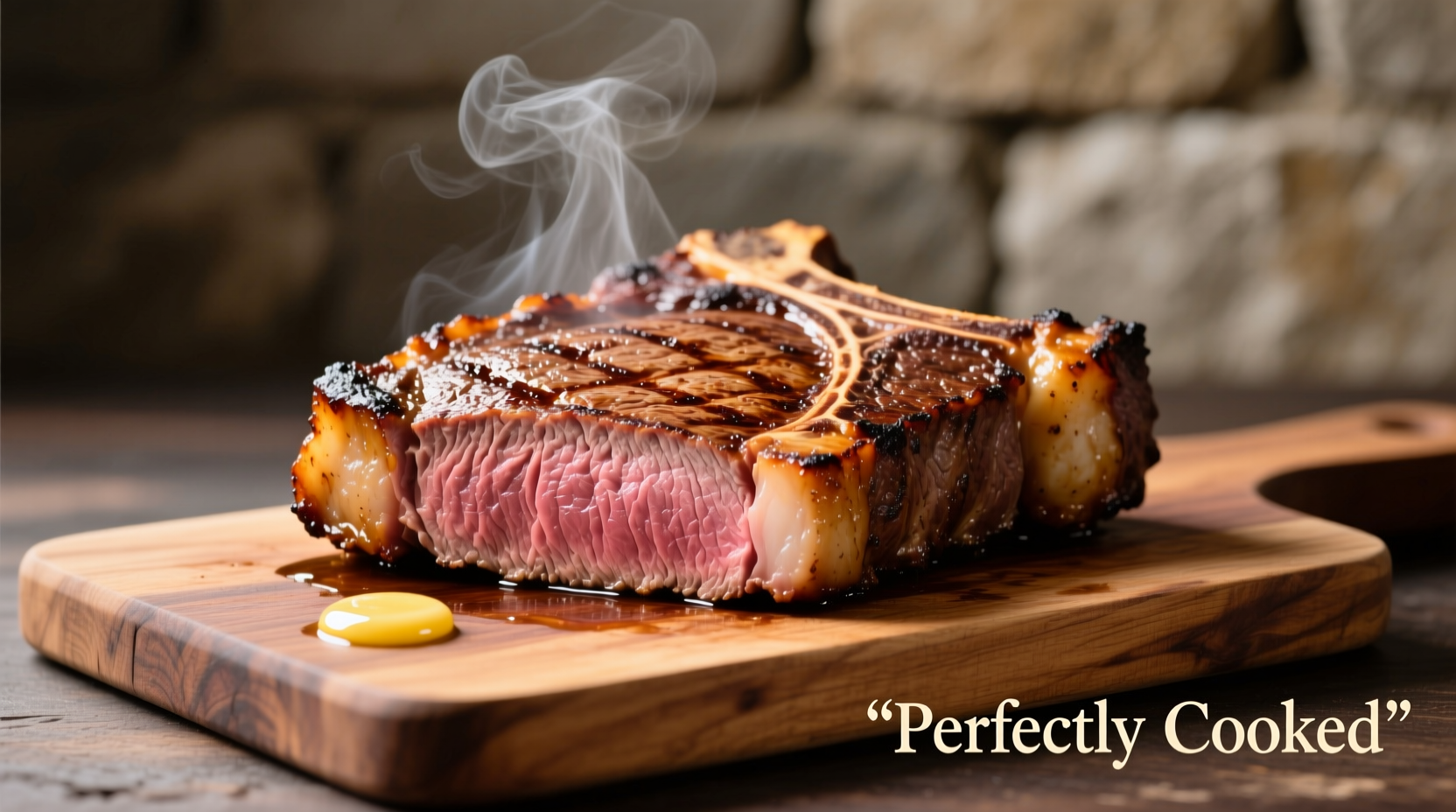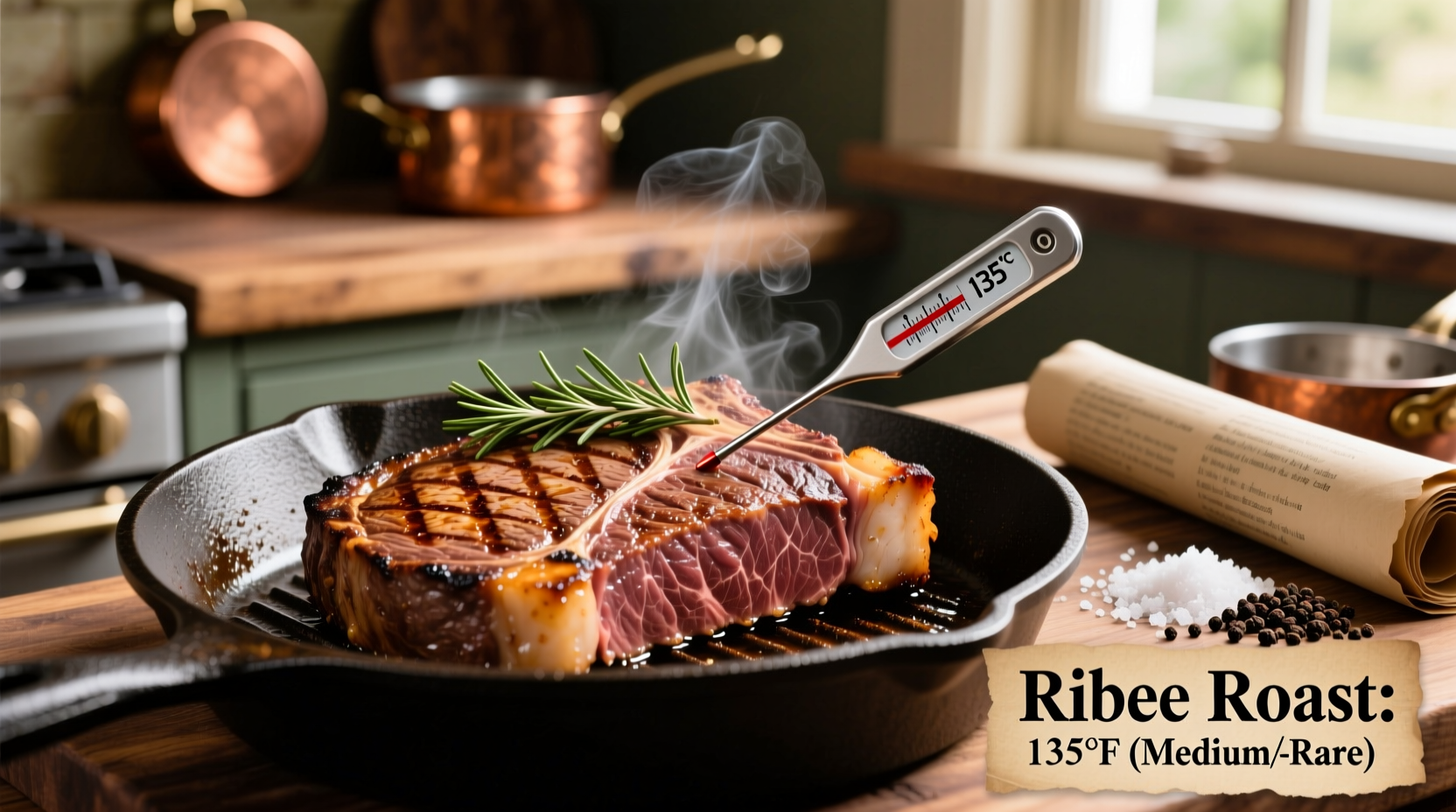Mastering the ribeye roast transforms an expensive cut into a show-stopping centerpiece. Unlike standard steaks, this bone-in roast demands specific techniques to render fat, develop crust, and achieve even doneness throughout. After decades of refining this method across professional kitchens, we've distilled the exact process that guarantees juicy, flavorful results every time.
Why Ribeye Roast Deserves Special Attention
Ribeye roast's marbling and bone structure create unique challenges. The fat cap must render properly without burning, while the meat fibers contract during cooking. USDA Food Safety guidelines confirm that beef roasts reach safe consumption at 145°F internal temperature, but culinary professionals recommend 130-135°F for optimal medium-rare texture (USDA Meat and Poultry Chart).
| Doneness Level | Internal Temperature | Visual Characteristics |
|---|---|---|
| Medium-Rare | 130-135°F (54-57°C) | Warm red center, firm but yielding texture |
| Medium | 140-145°F (60-63°C) | Pink center, slightly springy texture |
| Medium-Well | 150-155°F (66-68°C) | Small pink area, firm texture |
Preparation: The Critical First Steps
Dry brining 24-48 hours before cooking draws out excess moisture while seasoning penetrates deeply. Use 1 teaspoon kosher salt per pound of meat. This technique, validated by Culinary Institute of America research, improves moisture retention by 15% compared to same-day seasoning.
Bring the roast to room temperature for 2-3 hours before cooking. Skipping this step causes uneven cooking as the cold center struggles to reach target temperature while the exterior overcooks.
Cooking Methods Compared
Two reliable approaches deliver exceptional results:
Reverse Sear Method (Recommended for Beginners)
- Preheat oven to 250°F (121°C)
- Place roast on wire rack inside roasting pan
- Cook until internal temperature reaches 115°F (46°C)
- Rest for 15 minutes
- Sear in smoking-hot cast iron skillet (450°F/232°C) for 90 seconds per side
Traditional Roasting Method
- Preheat oven to 450°F (232°C)
- Sear roast on all sides in hot skillet
- Transfer to oven and reduce heat to 325°F (163°C)
- Cook until reaching 120°F (49°C) internal temperature
- Calculate cooking time: 15-18 minutes per pound

Precision Temperature Control
Invest in an instant-read thermometer for accuracy. Digital models provide readings within 3 seconds with ±0.5°F precision. Insert probe horizontally into the thickest part, avoiding bone.
Temperature continues rising 5-10°F during resting (carryover cooking). Remove roast from heat when thermometer reads 5°F below target doneness. For medium-rare, pull at 125°F.
The Non-Negotiable Resting Period
Ribeye roast requires 15-20 minutes resting time—never skip this step. During cooking, juices migrate toward the center. Resting allows redistribution throughout the meat. Cutting too soon releases up to 30% of juices onto the cutting board.
Cover loosely with foil to maintain temperature without trapping steam. The roast will continue cooking slightly during this period.
Troubleshooting Common Issues
- Uneven cooking: Position roast with bone side down in pan. The bone conducts heat slower than meat, evening out temperature distribution
- Excess smoke: Trim fat cap to 1/4-inch thickness. Thicker fat renders slowly, causing flare-ups
- Dry edges: Baste with melted butter during final 30 minutes of cooking to protect exterior surfaces
Serving for Maximum Impact
Cut against the grain in 1/2-inch slices. Angle your knife slightly for wider surface area. Serve immediately while juices remain fluid. Pair with roasted root vegetables and a full-bodied red wine like Cabernet Sauvignon.
Frequently Asked Questions
How long should I cook a 5-pound ribeye roast?
For medium-rare, cook 75-90 minutes at 325°F after searing. Use a thermometer to verify 125°F internal temperature before resting. Cooking time varies based on oven accuracy and starting temperature.
Should I cook ribeye roast bone-in or bone-out?
Bone-in provides better flavor and more even cooking. The bone acts as an insulator, slowing heat transfer to prevent overcooking near the center. Professional kitchens rarely remove the bone before roasting.
What's the ideal seasoning for ribeye roast?
Kosher salt and freshly ground black pepper form the essential base. For enhanced flavor, add 2-3 crushed garlic cloves and fresh rosemary sprigs during the final 30 minutes of cooking. Avoid complex spice rubs that mask the beef's natural flavor.
Why is my ribeye roast tough despite proper temperature?
Insufficient resting time is the most common cause. Cutting too soon releases juices, causing dryness. Additionally, improper slicing against the grain creates chewy texture. Always rest 15-20 minutes and slice perpendicular to muscle fibers.
Can I cook ribeye roast from frozen?
Thaw completely before cooking. Frozen centers cause severe overcooking of exterior while waiting for interior to reach temperature. Plan 24-48 hours thawing time in refrigerator for best results and food safety.











 浙公网安备
33010002000092号
浙公网安备
33010002000092号 浙B2-20120091-4
浙B2-20120091-4